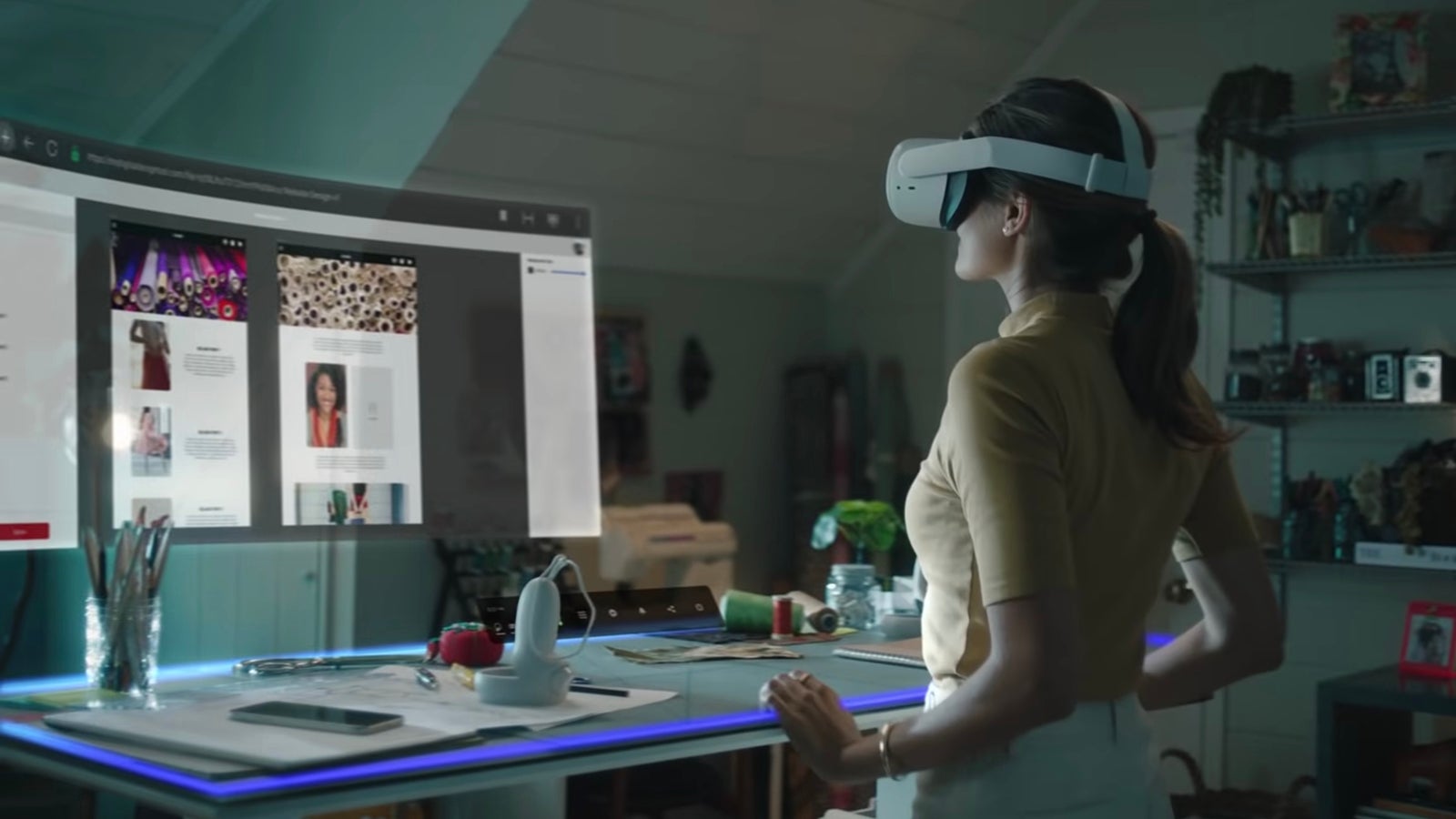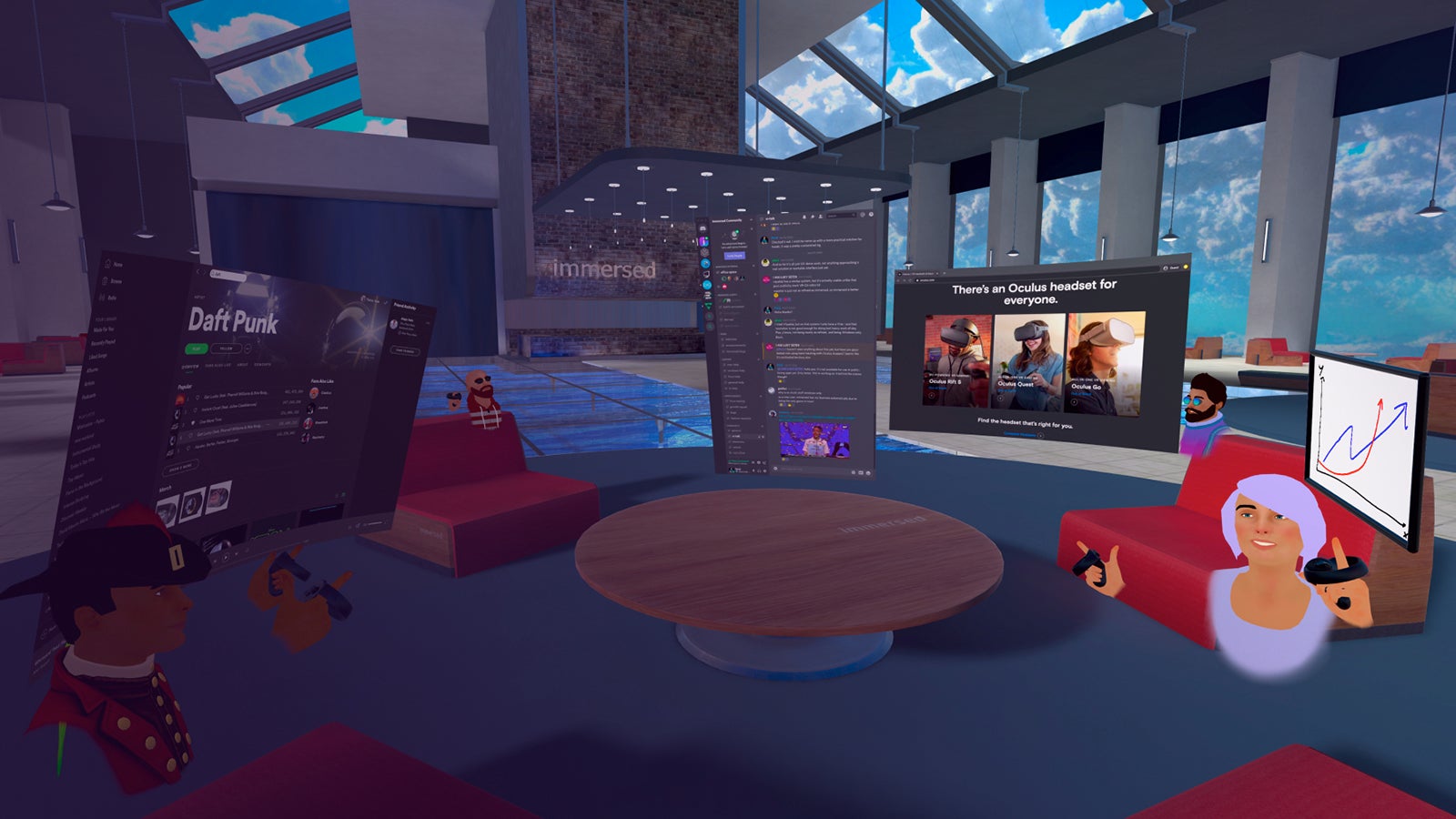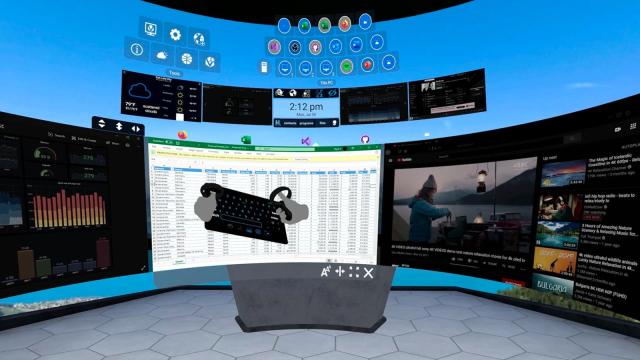Think of the Oculus Quest 2 and you naturally think gaming: flying through virtual reality worlds, shooting down virtual reality enemies, and so on. But Oculus has been updating its software recently and new features suggest it’s keen to help you get some work done, too — even if we’re still in the early stages of that potential being realised.
The main appeal of a virtual reality environment for work is that you can set up as many screens as you like, of whatever size you like. You can at last get the triple 32-inch monitor setup of your dreams, and your VR desk will always be clean. You’ve got a number of options for setting this up on your Oculus Quest 2, and we’ll take you through them here.
Add a Keyboard and Mouse
There’s an ideal hardware setup for the Oculus Quest 2 when it comes to working, and that’s to buy and install the $80 Logitech K830 keyboard, which has an integrated trackpad. Right now, it’s the only keyboard that you’ll actually be able to see in front of you in full, glorious VR, though we’re expecting more keyboards and more software options to arrive in the future.
You can actually add any keyboard and mouse combination you like right now, though the feature is still marked as “experimental” inside the Oculus Quest 2 settings. Open up Settings via the apps list, then choose Experimental Features. Click Pair and then Pair a new device, put your mouse or keyboard into pairing mode, and you should be able to link the two.

You’ll see there are also Bluetooth mouse and trackpad and Tracked Keyboard settings, if you happen to have the Logitech K830 (or some other compatible device, once we see more of them). There’s also a Bring Your Desk Into VR option: select Add/Remove next to this and you can tell the headset where your desk is. When you get close to it, you can use this as an alternative to your standard playing area, so you’ll see your controllers sitting on the desk, for example.
The fact that this is all labelled as experimental, and only one keyboard is currently supported, tells you that it’s early days. We should see plenty of improvements in the future, and no doubt plenty of tweaks to the settings and options we’ve mentioned so far. Facebook is apparently working on a pass-through window to see any keyboard, though it’s not here yet.
Work With Apps
Unless you’re using the Logitech K830 or are a very gifted typist, you’re probably going to want to see your keyboard. You can do this by replacing the virtual background behind your apps with the pass-through view from the cameras on the Quest 2. Open Quick Settings (from the left of the home menu), then select the Pass-through Home option.
The obvious place to start to get some work done is the built-in browser — it’s at the top of the main apps panel — which can get to you Google Docs, Outlook on the web, or wherever you need to be. Select the three dots up in the top right of the browser interface and you can change the size of the window you’re looking at; above the browser is a + (plus) button for opening up adjacent windows.

For perhaps an even better option, give Firefox Reality a try. It’s more flexible and versatile than the bundled browser, and it can also open up multiple windows side by side for that really immersive feel (you can surround yourself with web apps, if you want). Unfortunately, for the time being at least, Firefox Reality doesn’t support the VR desk or pass-through background features.
The productivity apps you’ll find in the Oculus Quest 2 library at the moment are mostly related to virtual meetings and graphic design, and we’ll have to wait for the productivity features that we’ve mentioned to be fully integrated and supported before office and messaging apps start showing up. That definitely seems to be the way Facebook wants to go in the future, though, as this demo video shows.
Work From Your Computer
There’s another option here, which is to have whatever’s happening on your Windows or macOS computer beamed over to a VR space that you access through your Oculus Quest 2. Your hardware setup stays pretty much exactly as it already is, but you can access it (from the same room or the other side of the world) through your virtual reality headset. You get to play around with multiple displays and more.
You’ve got a few choices to pick from. Immersed is one of the most impressive, and it’s free if you stick to two virtual monitors, with plenty more options (like a shared whiteboard and customisable workspaces) available for $20 per month and up. You need a desktop client on your laptop or desktop, and the app on your Oculus Quest 2, and then you’re ready to mirror whatever’s on your computer in a VR space.

Virtual Desktop runs along similar lines, and is also available for Windows and macOS. You only get one screen to work with at a time, but you can resize and position it however you like, and choose from a wide variety of scenarios and backgrounds. Both the apps for your computer and your Oculus Quest 2 are simple to set up and use, and Virtual Desktop will set you back $25.
Finally there’s vSpatial, which packs in a whole host of features to help you collaborate with others, including screen sharing, chat functions, and plenty more. Like the other two tools, you need to run one program on your headset and one program on your computer to start the remote desktop access on your local wifi network, and you can take it from there. You can get started with vSpatial for free, with features like group meetings and remote access over the internet costing from $15 a month.
